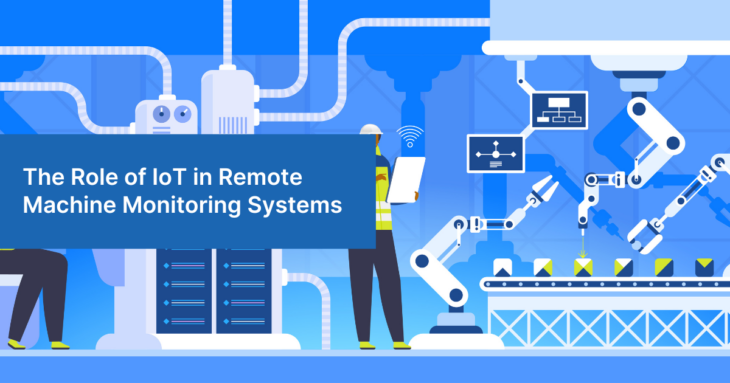Top Trends in Manufacturing Execution Systems and Smart Energy Management
Manufacturing execution systems have revolutionised factory management. The technology is an innovation on its own. However, with further advancements in this technology, efficiency and productivity have increased. Manufacturing execution system vendors are integrating their systems with new technologies for faster turnarounds. Companies that have adopted these systems say they provide better management and assistance than ever before. The same goes for smart energy management systems. The trends showcase that companies rely on this technology to meet their sustainability goals and optimise their energy consumption. Let’s look at these trends to understand how these new technologies work. Manufacturing Execution Systems (MES) Trends Digital Twin Integration A digital twin is a virtual visualisation of a real product or process that may be utilised with an MES. It is a virtual depiction of an actual product or process, enabling real-time visibility and control over manufacturing operations. MES may gather and analyse data, monitor production activities, and deliver performance, status, and quality reports. Artificial Intelligence and Machine Learning Integrating generative AI into MES will increase predictive maintenance, resource allocation, and product quality. However, it primarily aids shop floor operators and managers in making choices and managing production processes using data expertise. For example, in the fashion industry, accuracy and compliance are critical. AI will assist operators in running safer, more dependable manufacturing processes, lowering production irregularities and eliminating risks. This will be especially beneficial in overcoming the workforce’s lack of expertise when older, more experienced workers retire in growing numbers. Internet of Things IoT and edge computing provide real-time monitoring and control of manufacturing operations. In the FMCG business, this can result in better inventory management, faster market reaction times, and greater product monitoring across the supply chain. All of these factors contribute to high levels of quality control and customer satisfaction. For instance, Prescient’s factoryCONNECT uses IoT to monitor and optimise supply chains. Companies testify that its sensors have significantly reduced the downtime of the production line and increased its output. Cloud-Based MES Cloud-based MES helps enterprises streamline production to meet market demand and offer new goods more quickly. It is more cost-effective and feasible for manufacturers since it eliminates the need for physical equipment and additional IT personnel. Cloud-based MES enables firms to connect departments and include customers and subcontractors in the supply chain. It also assists manufacturers in enabling AI, Digital Twins, and Machine Learning to enhance visibility, analysis, and collaboration. Cybersecurity Manufacturing execution system vendors are performing the following operations to secure your data: Use a powerful encryption method, such as AES (Advanced Encryption Standard), to safeguard data in transit and at rest. Use tight access restrictions and multifactor authentication to prevent unwanted access. Ensure that MES software is regularly updated and patched. Monitor network traffic with firewalls and intrusion detection systems to identify possible dangers. Smart Energy Management (SEM) Trends Energy Efficiency Smart energy management systems have in-built audit tools that provide automated reports. These reports help in aligning business processes with smart energy goals. The technology aims to democratise energy efficiency and transparency across the organisation, making it crucial for optimisation. Renewable Energy Integration Renewable energy integration refers to linking renewable energy sources to the electrical grid. It entails generating, transmitting, and distributing renewable energy into the conventional power grid. Solar, wind, and storage systems can be installed in distant places or isolated from the main grid during outages. New standards and guidelines are created to link more dispersed energy systems. Machine learning algorithms examine big datasets to anticipate renewable energy power outputs. These methods will help promote renewable energy use. Demand-side management (DSM) Demand Side Management refers to a range of tactics used by SEM providers to reduce energy consumption. SEM provides time-of-use or peak-load pricing to encourage companies to save energy during peak hours. It allows companies to get monetary incentives as they can now purchase energy-efficient equipment or lower their energy use during peak hours. With this system, companies can install energy-saving devices such as LED lights, smart thermostats, and high-efficiency chargers for better energy efficiency. Smart Grid Integration Smart grids track power flow from generation to consumption in real time. They can even monitor power usage at the appliance level. They optimise energy efficiency in the following ways: Manage electricity flow and reduce the load in real-time to match generation levels. Offer two-way communication between customers and utilities. Renewable energy sources like solar and wind power should be included in the system. Collect information about energy use and consumer preferences. Utilise cybersecurity methods like encryption and threat detection to defend themselves from cyber threats. Energy Analytics Energy analytics give a picture of previously unattainable insights into a company’s energy statistics. Energy analytics software shows when the highest energy spend occurs. It also identifies which aspects of the company are inefficient and how external variables affect energy use. For example, Prescient’s PowerConnect has energy data analytics that reveal if one of your buildings consumes a surprising amount of energy during non-operational hours. Further examination may reveal that the heating controls in this building are malfunctioning. Taking action and resolving this issue will save thousands over a year. MES and SEM technologies are rapidly evolving. Manufacturers can optimise their operations and improve sustainability by adopting these systems. They can gain all the benefits of the new advancements with a fully-fledged smart energy management and manufacturing execution system integration.
Read MoreBoosting Profitability with Predictive Maintenance via Remote Monitoring
Maintaining profitability and boosting margins is always a top priority for many organisations. However, the process of doing so is quite meticulous for heavy-duty industries. Equipment is more prone to damage due to regular operations. Moreover, maintenance teams must constantly be alert to take swift corrective actions. These teams should be well-qualified and knowledgeable to diagnose the exact problem and apply the solution. The best way to move forward is to use new technologies. Predictive maintenance software is necessary for modern industrial operations due to their large scale and multiple geographical locations. It is a comprehensive software solution that includes various technologies working cooperatively. An Overview of Predictive Maintenance Predictive maintenance software combines different technologies. It is a synergy of data analysis, IoT sensors, and cloud computing. Here are the applications of each of these technologies: Data Analysis: It processes and examines data to find useful information and support decision-making. The main purpose of data analysis in a predictive maintenance software is to find anomalies that may indicate system failures. IoT Sensors: Sensors are devices that measure the output and operations of a system. It directly sends the data to the dashboard for data analysis. Cloud Computing: It transports data from one source to another via the internet. Cloud computing is faster than other forms of data transmission. As opposed to reactive maintenance, predictive maintenance aims to solve issues before they occur. The data gathered from the sensors makes such resolution procedures possible. The system swiftly picks up any anomalous behaviour to alert the respective authorities. On the other hand, this technology also differs from preventive maintenance. Although the name sounds the same, preventive maintenance has a slightly different protocol. It refers to regular scheduling of equipment maintenance and other systems to prevent failures. When employed with the other strategies, preventive maintenance makes up the total productive maintenance procedure. How Remote Monitoring Works The major purpose of predictive maintenance is to monitor plants and machines worldwide remotely. Therefore, this technology is also called a remote machine monitoring system. It provides the following advantages to industrial plants that adopt it: Real-time monitoring of the system. Real-time data analysis through sensors. Early detection of issues to lower the mean time between repairs. Reduced downtime to lower the mean time between failures. Predictive maintenance has the potential to reduce facility downtime by 5–15% and boost worker productivity by 5–20%, according to a 2022 Deloitte research. Critical Applications of Predictive Maintenance via Remote Monitoring Manufacturing Sensors monitor industrial processes and communicate updates to the appropriate parties. This enables proactive and timely decisions. Remote monitoring tracks, analyses, and controls vital assets, therefore preventing unplanned downtime and equipment failures. The technology collects data from vibrational and temperature analysis to detect failures. Visualisation tools also display complicated data in an easily comprehensible way through dashboards. Energy Generation Predictive maintenance improves operational sustainability by reducing energy wastage. It optimises asset performance and uptime to save money through oil analysis. Early detection of probable defects leads to fewer failures and less scheduled maintenance. It also reduces frequent unexpected downtimes. Hence, remote machine monitoring system software improves the efficiency of the energy generation process. Transportation Suppliers and logistics businesses can discover failure patterns and abnormalities. The system learns from them and forecasts future failures of machine components. Hence, it allows them to be replaced before they fail. This increases the supply chain’s efficiency and maximises equipment availability. The fleet can be optimised entirely to prevent mishaps on the road. It is also essential for fuel conservation and preventing pilfering. Building Management Predictive maintenance software monitors the location and handling of high-value equipment in real-time. The sensors monitor assets like: HVAC Valves Motors Pumps Conveyors Lifts Proactively monitoring performance reduces downtime and lost productivity. It also analyses condition monitoring data to find patterns and opportunities for improvement. Real-time monitoring of environmental variables and equipment performance allows for detecting possible dangers. Challenges and Considerations The various challenges associated with the adoption of a new predictive maintenance system are as follows: System infrastructure: Due to the strategy’s complexity, there are significant initial costs. These frequently entail spending on maintenance and data management tools. These costs also include updating and merging antiquated technology and monitoring systems. Capital is invested in the infrastructure supporting the data and systems. Employee training: It may be costly and time-consuming to teach staff members how to utilise new equipment, procedures, and data interpretation techniques. Requirements for data: Previous performance data can be used to forecast future results. The availability of historical and proxy data is essential for the success of predictive maintenance. Analysing data correlations with comparable equipment types under real-world operating situations is also crucial as it can enhance the prediction power of analytics. Best Practices for Implementing Predictive Maintenance Some of the best practices for implementing remote machine monitoring systems are: Feed historical data into the system for accurate predictions. Train the system properly to avoid unnecessary alerts and notifications. Train your employees to adopt the new system and its procedures. Integrate the system with your existing systems and processes for smooth workflows. Predictive maintenance via remote monitoring offers significant benefits for industries seeking to improve profitability. Industries with multiple locations can proactively identify and address potential equipment failures. While there are challenges, the long-term benefits of predictive maintenance often outweigh the initial costs. You can employ the solution with top-notch software like machineCONNECT, which was designed by Prescient Technologies. It is a predictive maintenance software that optimises your maintenance procedures and reduces downtime. It is the first step towards making your business more efficient!
Read MoreThe Role of IoT in Remote Machine Monitoring Systems
Remote monitoring has transformed the manufacturing industry, bringing new levels of process control. This transformation has been driven mainly by what came to be known as the Internet of Things (IoT). IoT enables manufacturers to get real-time information that can help them adjust operations to overcome potential issues and problems. All of this is done remotely with the decision-maker absent from the scene of operation of the manufacturing process. In this article, we’ll examine how IoT remote machine monitoring is used in the manufacturing industry. Core Components of IoT in Manufacturing How IoT is Used In Manufacturing When it comes down to the applications of IoT to the shop floor, there are numerous ways in which it is useful. In this section, we take a look at how it’s used in manufacturing: 1. Predictive Maintenance Predictive maintenance is all about staying ahead of problems. Manufacturers can spot issues by closely monitoring equipment in real time before they become expensive failures. A simple example is catching an unusual vibration or a temperature spike in the chuck of a lathe machine. These are often signs that something has come loose or might be starting to fail. This information lets you fix the problem early and avoid unexpected downtime. 2. Quality Control Quality is another area where IoT sensors play a crucial role in maintaining consistency during manufacturing. Quality control systems might use radiation, sound, and vision-based inspection systems to measure material properties, dimensions, surface defects, or temperature. The data helps to strictly adhere to quality standards set by the manufacturer. If a sensor detects any deviations from the norm, real-time data alerts operators to potential defects. 3. Asset Tracking and Management IoT simplifies asset tracking and management by providing real-time updates on tools, materials, and finished products. With RFID tags, manufacturers can closely monitor every asset throughout the production process and on the factory floor. Machine vision systems can also extend this capability from the factory floor to the whole supply chain. Manufacturers can optimize stock levels and reduce waste by integrating IoT into inventory management. Automated tracking further helps prevent overstocking and stockout problems. 4. Energy management IoT plays an important role in monitoring energy consumption across manufacturing plants. By continuously monitoring energy use through smart meters and sensors, manufacturers can gain detailed insights into where and how energy is being consumed. The sensors can be used to monitor individual machine energy consumption and energy spent on human activities as well. When coupled with a feedback system, it can also optimize on and off times to save energy to the full extent. IoT for Data-Driven Decision Making IoT data is the most valuable output which can be used in real time or for long-term analytics. Here’s how it works: 1. Real-Time Analytics IoT data enables real-time analytics, which gives instant insights that help manufacturers make quick decisions. Continuous data collection from sensors allows you to spot issues and adjust operations immediately. This means you can tackle problems before they escalate and keep everything running smoothly. 2. Visualization and Dashboard Visualization tools and dashboards make IoT data easy to understand for anyone. The interfaces, often customized to the manufacturer by the IoT platform, turn raw data into clear, actionable visuals, graphs, charts, and maps. The shows what’s happening across the plant in real time. For plant managers, dashboards are crucial as they provide a quick view of the operations, highlight key metrics, and alert them to any issues. 3. Machine learning and AI Integration Beyond real-time analytics, platforms also offer machine learning capabilities that turn long-term data into useful information to predict trends, spot patterns, predict failures, and optimize operations. Using Ai gives manufacturers critical insight they never had earlier. Closing Thoughts IoT remote machine monitoring is already unlocking value to manufacturers at an unprecedented level. In fact, McKinsey estimates the global value of IoT to be $12.5 trillion by 2030. This means going forward more manufacturers will adopt the technology to gain a competitive edge in the market. If you are in the manufacturing sector you must know how you can improve your operations using IoT. MachineCONNECT is an advanced machine monitoring system designed for manufacturers to act as a command center for process control. Contact our team today to learn how your factory can benefit from IoT and significantly improve its operations. Click here to request a demo!
Read More

